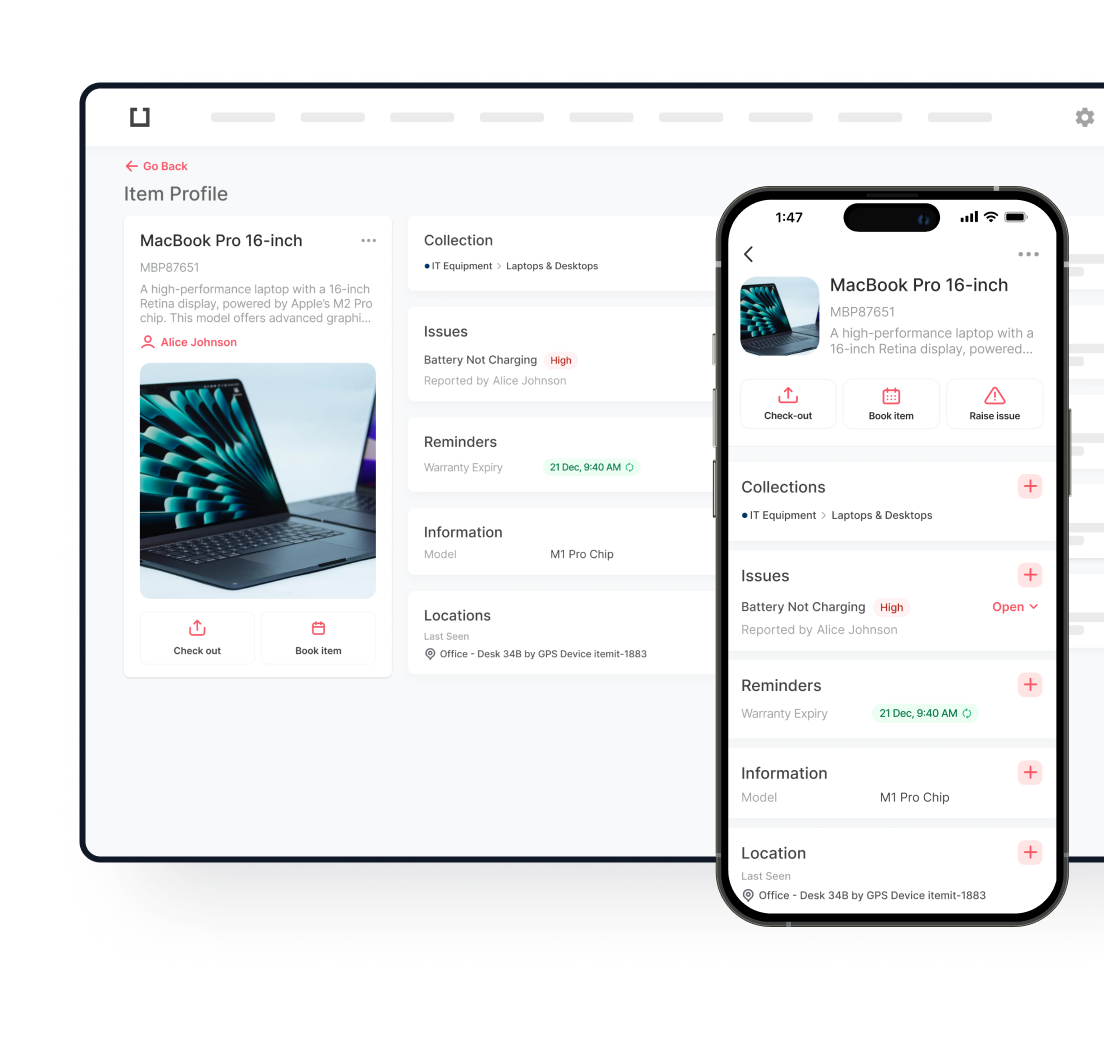The assets being referred to here are those which are essential for daily operations. In other words, the fixed and non-fixed assets that you use day-to-day. Assets that you use less frequently can also be considered just as important. They too can be added to your list of assets that you track.
So, should you make the switch to the software? We think you should, and there’s never been a better time.
Asset Tracking Software: How It Works
When you use software such as this, you can find that your business is more empowered. When you use reliable, modern tracking software you have a real opportunity to boost your business.
Which Assets Can You Track?
As a matter of fact, you can track any assets that you please. These can include:
- Mobile phones
- Tablets
- Laptops
- Computers
- Printers
- Vehicles
- Buildings
- Uniforms
- Tools and equipment
- Stationery
- And so much more
Any asset that is of value to your business can be tracked. However, when you’re tracking assets for the first time, you may want to start with those that are most important to you. Alternatively, you could simply choose to add all of your assets to your asset tracking software.
The Benefits of Using Asset Tracking Software
- Having fewer ghost assets
- Understanding where your assets are at all times
- Having well-maintained assets
- Being able to report issues
- Having access to your assets via a computer, tablet, or mobile phone
- Creating exportable reports
- The ability to create historical data from day one
These are just some of the benefits that are associated with using the right software to track your assets. There are so many more benefits, however, if we only consider those listed above it’s clear why many businesses are making the switch.
A business that is not in control of its assets may not be performing as well as it could. Management may not understand where their assets are, how many they have, or how well they’re working. However, when you have all of this information in the palm of your hand, your business could become more productive.
Your employees won’t take as much time locating assets as they can be tracked in an instant. You can find out within moments whether the right equipment has been sent to the right location. Your assets may not go missing quite as often as they do now.
This is all thanks to the ability to track your assets using RFID tags or QR codes. The codes or tags can be affixed to your assets and tracking can begin almost instantly. As a result, your business will have more control over the asset’s location and many other aspects.
How To Make The Switch
Some tracking software lets you do this by sending you QR codes or barcodes that can be affixed to your assets. Once the codes have been scanned, a digital profile is created. An abundance of information can be added to the profile. As a result, you can gain access to the information when you need to.
One of the best ways to begin is by attaching a code to the assets in front of you. Once the code has been affixed and scanned, add as much information about each asset as you wish. Continue to add all of your assets to the software until there are no more untracked assets. Then, you can have peace of mind knowing that you are in full control of every asset your business owns.
If you like the idea of switching to asset tracking software, contact us. We can help to make the switch as easy and as painless as possible. You can contact us now at: team@itemit.com. However, if you want to start tracking your assets now, simply complete the form found below to get started.

Try itemit
Choose a better way to track
your assets.
Start your free 14-day trial now!

Keep Learning
itemit Blog
Tips, guides, industry best practices, and news.
Why Your Library Needs Asset Tracking Software
Your library needs a tracking system so you know where your inventory is all of the time. Discover why an RFID asset tracking system is ideal!
How To Switch To Asset Tracking Software
Have more than a few assets and want to have more control over them? Read this post to find out how asset tracking software can help!
Tool Maintenance Made Easy
Would you like to keep your tools in a better condition? read this post now to find out how using pre-emptive maintenance can help!

